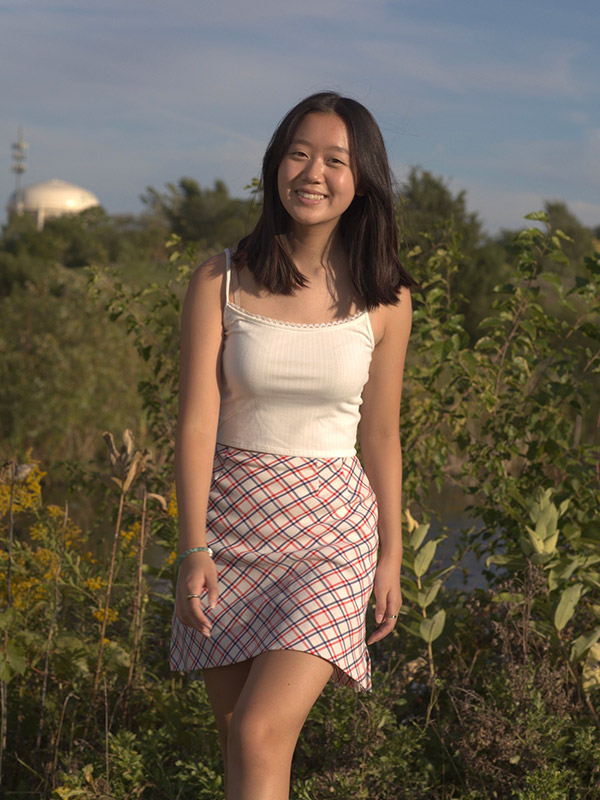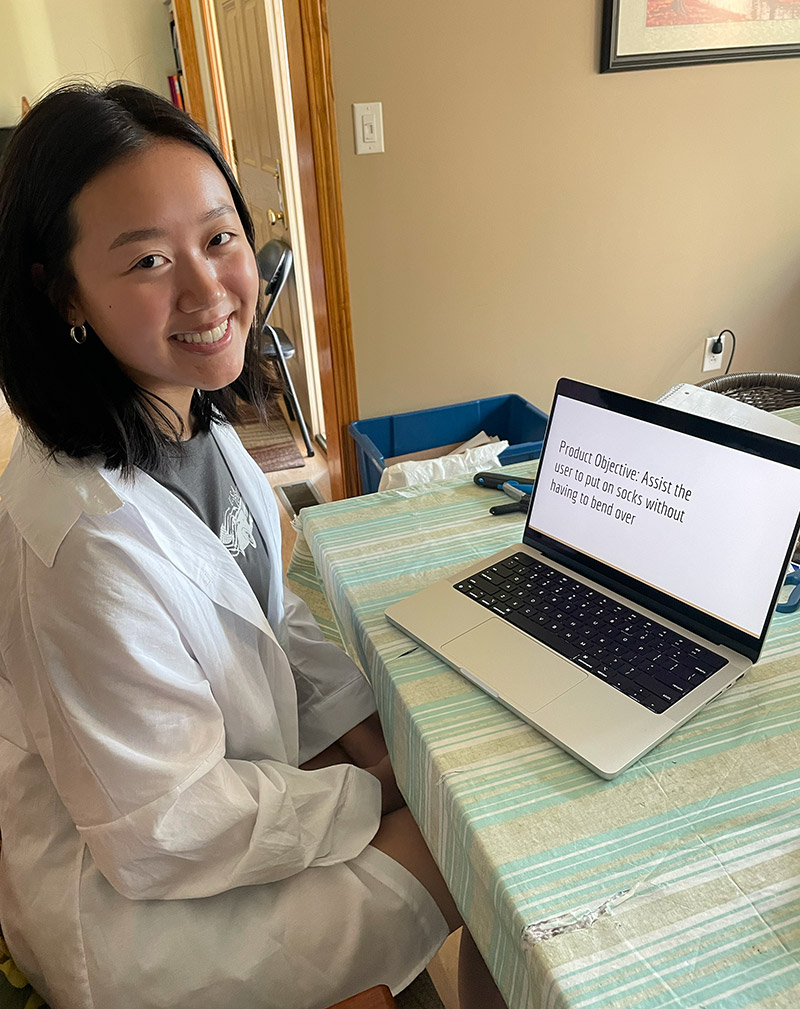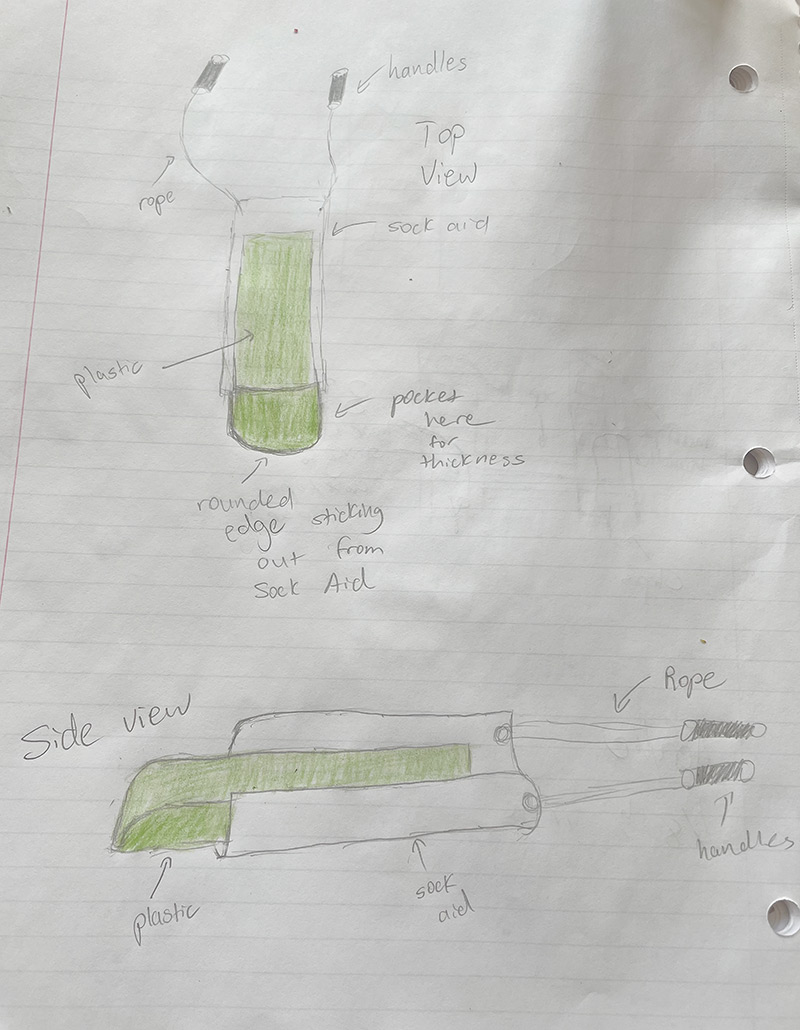Elaina Xiao reports on her experiences while attending Designing for Assistive Technology at the MIT BeaverWorks Summer Institute. Elaina says, “This is the most hands-on and interactive learning experience I have ever had remotely.”
“We began the week in a large Zoom room with everyone participating in BeaverWorks. We heard from speakers, learned more about collaboration, and prepared to enter our respective classes. In my class, we were able to play some icebreaker games, talked more about assistive technology and disabilities, and learned more about our peers,” Elaina explains.
“On the second day of class, we started with an explanation of how to hold an interview, specifically with someone that has a disability. I had the opportunity on the second day of class to have a mock interview with Dan McCoy, a gold-medal Paralympian for Team USA in sled hockey with spina bifida and hydrocephalus. He now runs a personal adaptive fitness business to help others with physical disabilities, specifically spina bifida. These interviews were meant to teach us how to interview someone with disabilities, as our final project is aimed at creating some sort of assistive technology for someone in our community. This was not only a once-in-a-lifetime experience, but it was truly revealing how amazing these interviewees are and what they have accomplished and overcome in their lifetime. Even though they are faced with a challenge that interferes with their daily life, they continue to work on what they love and make an effort to have a positive outlook. Dan even wants to help all people in the future, which shows his commitment to health and helping others,” Elaina reports.
“On the third day, we experienced what it would be like to be an apprentice. We were given a task and had to sketch our plans. They had previously sent us a box full of materials and tools we could use called a “mystery box.” However, after we finished our sketches, we had to swap with another student and complete their plan with no clarification from them. Of course, this led to a discussion about what is important to add for clearness and direction. We realized that it is very important to add all details and not to assume someone would know what to do. I was luckily given a drawing that was well detailed and mostly completed all of the requirements! Although I had to draw a bridge, my partner had to draw a tower,” Elaina adds.
Elaina and her classmates finished the week on design sprints — working on ways to make remote learning better, and working on a 3-D design project.
“The Garwin Family Foundation truly prioritizes students’ learning. Before my course, I was having difficulty with my computer. As soon as I asked if I could use the scholarship I was awarded to fund a new computer, the GFF was gracious enough to support my purchase of a new laptop. This demonstrates their commitment to learning and helped me keep up with my virtual class,” Elaina says.
“Although the course can be challenging and more hands-on than my previous experiences, I have thoroughly enjoyed my time so far. Spending around six hours in front of the computer can be difficult, but there have been interactive activities that help engage me. Over the next few weeks, I will be making assistive technology, which is a bit intimidating but exciting. I am very excited about what’s to come next week,” Elaina adds!
Elaina, halfway through the course, has spent her second week working out ideas for class projects, learning about Gantt charts, and meeting an inspiring guest speaker.
Elaina demonstrates her Sock Aid prototype.
“On Monday, we were greeted by an exciting and inspiring guest speaker. Adriana Mallozzi is the business founder of Puffin Innovations, a woman-owned assistive technology startup with a diverse team focused on developing solutions for people with disabilities to lead more inclusive and independent lives. She explained her experience in creating assistive technology because she has cerebral palsy, which affects her ability to move. I continued to be inspired by her experience and her determination to develop assistive technology that actually helps those who need it,” Elaina reports.
In addition, Elaina reports that the class learned more about occupational therapists and their work with the disabled, how to create engaging slideshow presentations, and 3-D scanning. Michelle also worked on her class project prototype.
“On the third day, we began by learning about 3-D scanning and how you can use 100 photos to 3-D print something. We saw an example of a statue in a museum and how they were able to print it just by taking photos of it. We also talked about our own projects and how to begin prototyping and testing our ideas. We had an hour for work time, and I was able to start creating my low-fidelity prototype. My mom is my co-designer and wants something to help put on socks without bending over, as she recently had colon surgery. I created an idea out of cardboard and was able to test it on her to see what worked and what we wanted to change. It was very exciting how I could use cardboard to create something with an important purpose,” Elaina says.
“On the fourth and fifth days, we mainly gave presentations and got feedback from the staff. I got a lot of great advice from others and was able to continue thinking about my project. I decided on editing the current bestseller sock device, called the Sock Aid. This way, I don’t have to reinvent the wheel, but make it better and more effective. So far, I am very excited to see what changes I can make and see other amazing projects as well. I have heard presentations on a student making a text-to-speech app, a new arm brace, and an adaptive chair for someone with back pain. I can tell I will learn a lot from my peers and find inspiration from their work,” Elaina adds.
Elaina reports that during her third week at BWSI, students focused on preparing documentation, editing their class projects, and listening to guest speakers from Google speak about accessibility features and issues. Elaina’s latest project is improving the design of a device that helps people with disabilities put on socks.
“I received the Sock Aid in the mail and was able to start brainstorming how I could incorporate my original ideas with the product. From testing on myself, I found that the socks my co-designer and I use are a lot smaller than the opening where you are supposed to slide them on. Thus, I thought of adding more material to create a smaller angled opening for the sock to sit. Our feet are also slimmer than the design, therefore, it won’t affect the success of the product. I also found that you have to pull up the rope a lot to get the sock on the foot. This is very inconvenient for your arms as they have to pull up very far. I decided to lower the handles by tying the rope so my co-designer can easily lift their arms while putting on the sock. Overall, I was able to cut the time it took for my co-designer to put on socks tremendously. With the Sock Aid, it took her 37 seconds. With the new alterations, it took 15 seconds,” Elaina reports.
“As the camp comes to an end, we are continuing to work on presentations to prepare for our final event. I have gained valuable information while watching my peers present and the best way to show your prototype and explain new ideas. I am very excited and anxious for the final event, but I am excited to show my new device,” Elaina exclaims!
Elaina Xiao talks about her last week at BWSI where she presented her final class project — Sock Aid.
“During the final event, I was able to present my final project and my hopes for the future. This course has inspired me to look at assistive technology in my community and how it could be improved. As they played a video about why we chose to attend BWSI, a clip I recorded popped up to a crowd of nearly 400 people. It was bittersweet to be reminded of my views before I started the camp to now. I was nervous, excited, and ready to learn a new skill. I didn’t realize I would gain so much in the process,” Elaina reports.
“My experience with BeaverWorks Summer Institute has become invaluable. I thought four weeks would feel incredibly long, but I feel like the past month has flown by. I am so grateful for the Garwin Family Foundation for supporting me through this program. As my senior year is about to begin, I know I will be ready to handle tough building projects, collaborate with new faces, and accept assistance from others throughout the year,” Elaina adds.
Great job, Elaina. We wish you much success with your future assistive technology ideas and projects!
>> Read Elaina Xiao’s final report (PDF file, 75 KB).
>> Learn about other students’ experiences in the GFF Scholarship Program.










